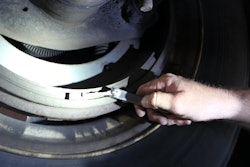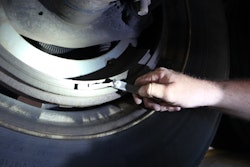There is no question that the Environmental Protection Agency’s (EPA) emissions regulations have resulted in cleaner-running diesel engines. Levels of nitrogen oxides (NOx) and particulate matter that once spewed from exhaust stacks have been reduced to a fraction of the levels that existed prior to 2002.
But as those levels dropped, component manufacturers needed to respond to something that was on the rise – in the form of the temperatures under the hood.
The introduction of technologies such as exhaust gas recirculation (EGR) systems led to the higher heat rejections that shortened the life of fluids and transformed hoses into bulging, gooey messes. The lifespan of components ranging from alternators to belt tensioners came under attack, leading to premature failures and the always-dreaded comebacks for the shops that repaired them.
“It was much more than anybody anticipated,” says Tom Kleich, Horton’s sales team leader, referring to the temperatures that emerged.
As a result, manufacturers of a host of under-hood components redesigned parts to better withstand the impact of the higher heats.
The good news is that an array of related components has been refined to account for the more challenging environments.
Upgraded alternators available in today’s aftermarket, for example, have been protected with high-temperature grease and seals, their rectifiers have been refined to better dissipate heat, wires have been shielded with upgraded coatings and internal insulators have improved. The compounds used to make hoses also have been enhanced to withstand the surrounding heat.
“We’ve had to go to a high-temperature grease and high-temperature seals, and in some cases go to a different design of bearing and seal that run cooler,” Kleich says, referring to his company’s fan drives. In terms of the grease that is used, that has required the shift from a mineral-based formula to a synthetic offering.
Roy Milne, a field service manager with RH Sheppard, which makes heavy-duty steering systems, says his company went to different materials for some of its seals to solve the heat issue. “We constantly are working with our seal suppliers to come up with better materials,” Milne says. “Silicone is a fantastic seal, and it has an incredible heat range.”
The use of the silicone also required several design changes to the products themselves. “It’s so soft that it will extrude out the smallest parting line or crack between the cylinder head and the housing,” Milne observes.
Even some filter designs have evolved. Since the filters are mounted on the cooler side of the engine, the heat-related changes have involved little more than some additional heat shields and air gaps. But there is no mistaking the fact that some of the products look drastically different than the models that came before them.
Dan Adamek, Donaldson’s director of engine air filtration development, notes how some filter elements have evolved from block-shaped designs into longer and skinnier models that are physically smaller than previous products. As the space under the hood grows ever more crowded, filter designs are competing for the room that remains.
REPLACEMENTS THAT LAST
Even replacement procedures will play a role in protecting newly installed components from the higher heats. The hoses that run near exhaust pipes, for example will need to be properly shielded or insulated and secured into position. Additionally, heat shields of every sort will need to be replaced if they have degraded over time.
These new considerations represent the new reality, and the challenges are not expected to disappear in the years to come, either. As new EPA regulations are introduced, Roy Milne, a field service manager with RH Sheppard, expects other heat-related challenges will follow.
“The newer the trucks get,” he says, “the more heat issues we encounter.”
The heavy-duty aftermarket will continue to play a role in addressing these issues, helping ensure customers receive replacement components that are up to the challenge.
KEEP THE HEAT IN MIND
Ultimately, the challenging operating environment under the hood means that the choice of replacement components will need to account for today’s operating realities – and this could present new opportunities to offer upgraded options.
A vocational truck that is equipped with an on/off fan drive may not benefit from the ram air that is enjoyed by an over-the-road highway tractor, so it should probably be retrofitted with a two-speed or multi-speed design, Tom Kleitch, Horton sales team leader, says as an example, noting how a traditional on/off product will be hard on belts and fan drives alike.
In addition to providing customers with replacement parts that offer improved performance, distributors and service providers will also enjoy the higher profits that come with the upgraded retrofit. An on/off fan might cost $200, but a superior two-speed design can cost $500; its multi-speed counterpart can be worth $1,000.
“It’s a pretty simple retrofit,” he adds.
Customers who face heat-related failures in power steering systems, meanwhile, may want to consider ordering bigger fluid reservoirs or power steering oil coolers.
When considering a fan drive, some customers may need to be advised to “dial the engine down,” Kleitch adds. If a truck owner has cranked up his governed speed from 2,100 rpm to 2,300 rpm, for example, a fan drive ratio of 1.3:1 will be generating 100 hp on an 11-blade, 32-inch fan.
“That’s a lot of fuel consumption and horsepower loss.”









